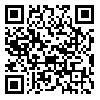A standard assumption in the empirical literature is that exchange rate pass-through is both linear and symmetric. This implies that size (large-versus-small exchange rate changes) and direction (currency appreciations-versus-depreciations) have similar effects. In this paper these assumptions have investigated for Iran's export prices. So, this paper examines the asymmetric exchange rate pass-through to the monthly import price index in Iran during 1997:1–2010:9. Therefore positive and negative exchange rate shocks have been separated using Mork Criteria and large and small exchange rate changes by determining a threshold. The results show that the response of export prices to currency appreciation and depreciation is asymmetric. So, the negative exchange rate shocks have a greater effect on the export prices than the positive exchange rate shocks. According to our estimation results, there is a threshold at 1.3% of monthly changes in exchange rate of Iran and also export prices react asymmetrically to exchange rate at around this threshold. If both direction and size effects are considered, we find that export prices respond asymmetrically to large and small appreciations and depreciations.
Received: 2012/02/21 | Accepted: 2013/03/10 | Published: 2013/03/10
| Rights and permissions | |
 | This work is licensed under a Creative Commons Attribution-NonCommercial 4.0 International License. |



